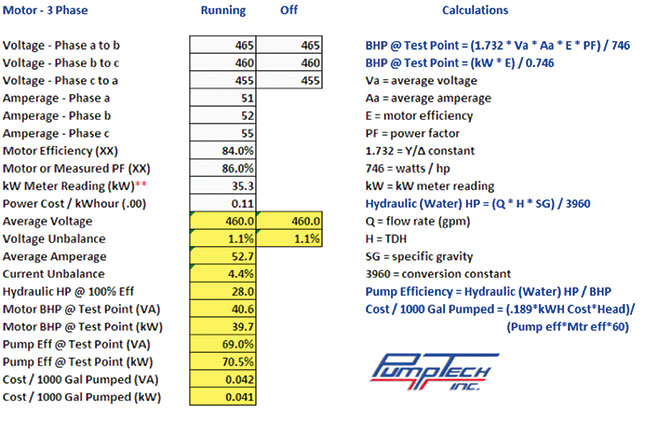Last of two parts
06/11/2014
In last month’s column (Pumps & Systems, May 2014), the drawdown analysis portion of the pump and motor field test spreadsheet was reviewed. The calculations performed by that section of the spreadsheet provided the flow and total dynamic head produced by the pump during testing. This month, the motor testing section will be reviewed.
Motor Testing Importance
Motor testing is important for two reasons. First, it provides the information required to calculate horsepower at the test point. Horsepower allows for the calculation of pump efficiency at the test point. Then the tested head, flow, horsepower and hydraulic efficiency can be compared with those on the manufacturer’s pump curve. Pump efficiency also allows for monitoring the cost per thousand gallons pumped each time a test is performed. During motor testing, operational data that helps identify unhealthy conditions that can lead to premature failure can also be collected. Important components include:- Motor temperature
- Loading
- Actual supply voltage
Horsepower Calculation
Figure 1 shows the motor test portion of the submersible wastewater pump and motor testing spreadsheet. Like the pump test portion, the gray cells are entered data, and the yellow cells are the calculated results. The equations on the right show how certain results were calculated. The information required includes phase voltage and current, motor nameplate efficiency, power factor (PF), and the power cost per kilowatt hour (kWh). Voltage and current are measured with a high-quality voltmeter and clamp-on ammeter. The spreadsheet instructions detail the optional use of kilowatt and PF meters. Figure 1. The motor test portion of the submersible wastewater pump and motor testing spreadsheet
Figure 1. The motor test portion of the submersible wastewater pump and motor testing spreadsheet
